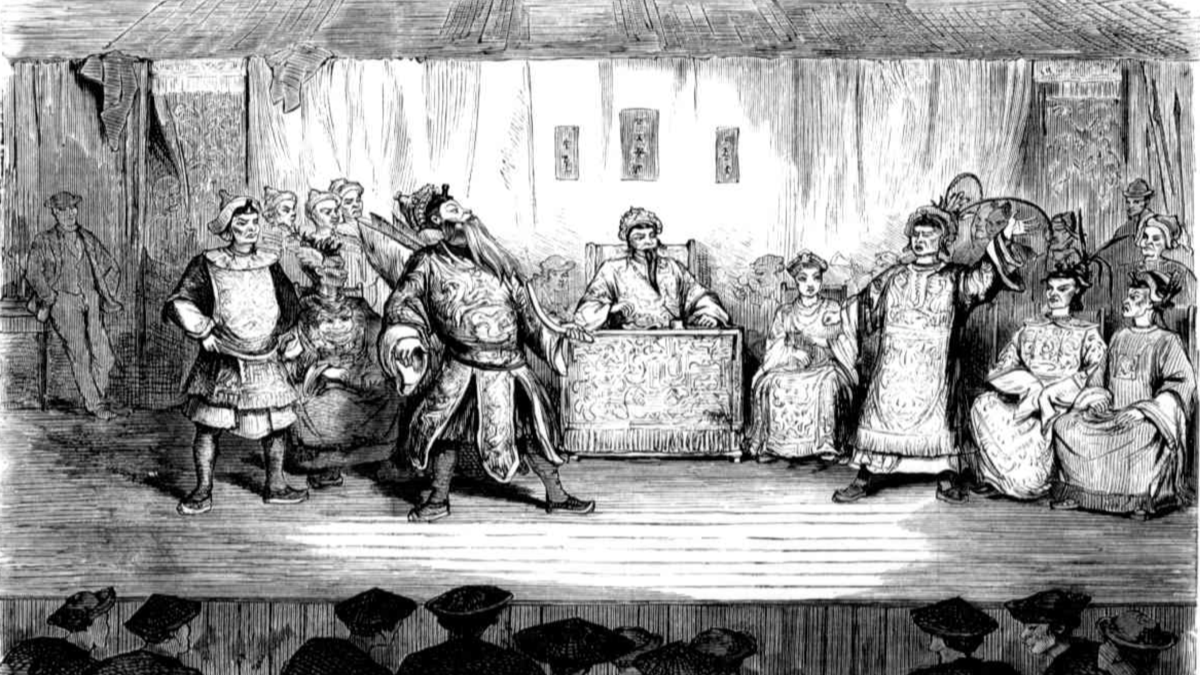

Characteristically the bamboo flute is used as a melodious accompaniment in these operas. In the Ming dynasty, Kunqu Opera 昆曲 kūn qǔ (or just Kun), originating from Suzhou, Jiangsu, became the most important form. At this time the opera became more regimented with the Imperial form consisting of four acts each with a different principal actor. The opera was further developed in the Song dynasty and taken up during the Mongol dynasty with hundreds of local forms competing for audiences. The province of Shanxi was the initial center for this new art-form. There is evidence for opera as far back as a thousand years when Emperor Xuanzong created a troupe to perform in his ‘ Pear Garden’, to this day opera performers are colloquially known as ‘Children of the Pear Garden’ 梨苑 子 弟 lí yuàn zǐ dì. Video not visible YouTube video of Kunqu Opera Chinese Opera History China National Peking Opera Company performing the Red Haired Galloping Horse opera at Meilanfang theatre in Beijing, China Copyright © Dreamstime see image license The characters are well sustained and the part of the young huntsman Ma Guan, well played.”. Vaughan wrote in the Penang Gazette in 1853 “.The scenes that followed I think you will allow deserve to be classed among our best farces. The art was admired by European visitors, J.D. It was forbidden to portray Emperors or Empresses of the current dynasty. The story-lines come from folk tales, legends and classical literature - anything too contemporary was considered politically dangerous. Operas are classified as either Wenxi (civilian plays) or Wuxi (military dramas) and also as dramas, comedies or farces. There are strict rules and conventions that limit creativity and yet each generation seeks to surpass what has gone before. Over the centuries the art form has become more refined, as in much of Chinese art, the aim is to recreate former masterpieces. An aspiring opera performer has to learn to 唱 念 做 打 chàng niàn zuò dǎ sing, talk, act and fight. Video not visible YouTube video of Peking OperaĬhinese Opera is an art-form that includes many elements: music, dance, acting, mime, comedy, tragedy, acrobatics and martial arts.


 0 kommentar(er)
0 kommentar(er)
